
Delicious dishes you can grab and eat quickly for those times when you’re busy, and ingredients to put together and cook when you have a little more time.
In fact, I think that cooking and doing food preparation is one of the highest acts of self love you can participate in.
And if you’re cooking for your family that’s the ultimate act of love too.
Bravo to you for taking the time to nourish your body, learn about the food that supports optimal health and caring enough to figure out how to make this a part of your (I’m sure) busy life.
Today, I want to pull back the curtain and show you exactly what I do to set myself up for a week of successful eating.
Keep in mind, I’m doing this for one person, and my goals are to a) enjoy my food b) be healthy, c) support my workout program and d) maintain and continuously improve my physique.

*please note: reproduction of this, or any of the copyrighted work or images on this website without written permission from the author and owner of the site is a violation of copyright law and will be pursued to the full extent of the law. This content has been created by the site creator and is for educational use on thebettyrocker.com. Do not plagiarize or reproduce this, or any content from this site. Sharing links and referencing these articles with permission is the proper approach to take. Use the contact form if you have any questions.
My approach to food prep is one that finds a happy balance between variety, delicious flavors, and metabolism-boosting meal combinations.
I like having some guidelines to follow AND some room to deviate from my plan – because one of my daily affirmations is “I always think BOTH.”
Who says you can’t have it all?
Packing up chicken, rice and broccoli for days in small containers just doesn’t appeal to me – I might last for 2 days eating like that, but after that my body just craves variety! Excitement! I want to taste something new.
Now granted, from a practical and financial standpoint I have to be smart about how I choose the foods I want to cook for the week, because too much variety means I’ll have to get a ton of different ingredients.
So I strategize by choosing a few different recipes that have complimentary ingredients, using some fresh and some frozen to save money (and to make sure things don’t go bad), and buying things I plan to use over and over in bulk.
1. Choose your recipes.
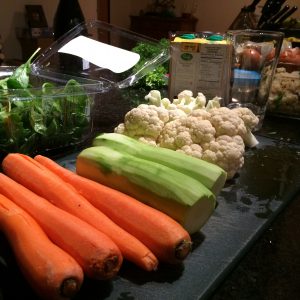
I include protein with every meal. I like making sides out of my carbs, but that’s not a rule, I could make a beef stew with potatoes and that would be awesome.
I also think about my entire day. Where will the healthy fat come from? If I’ll be having oatmeal for breakfast some days, do I have a plan for what protein will go with my breakfast too? I might stock up on protein powder to blend into my oatmeal bowl.
I want to make sure I’ve got avocados on hand to put on my soup, and plenty of whole eggs – plus I like to get a carton of egg whites to stretch out my eggs and have at least 20-25g of protein when I eat eggs for breakfast.
This week, I had just come back from traveling and was in the mood for comfort foods. I wanted chicken soup, pizza, muffins, oatmeal – that kind of stuff. So I put together a list of recipes that sounded good.
Recipes this week (links to recipes you can find on the blog):
Sundried Tomato Pizza (this is an entree that packs well for lunch, or heat up for dinner)
Pumpkin Protein Muffins (a perfect grab and go snack bursting with health-boosting ingredients)
Overnight Oatmeal (I alternate between eggs and oatmeal in the morning)
Easy Strawberry Chia Smoothie (I just have one smoothie recipe this week, though I’ll often have 2)
Mixed Greens Salad – your choice of ingredients – I like romaine, baby spinach, mixed baby greens, etc. I like to have a 4-6 serving salad in the fridge. I don’t cut any tomatoes into it unless they’re small non-juicy cherry tomatoes, and I usually reserve any liquid like fresh lemon and olive oil for when I’m eating it. This is great to have on hand to eat cold or even throw in the sautee pan to have with your eggs hot.
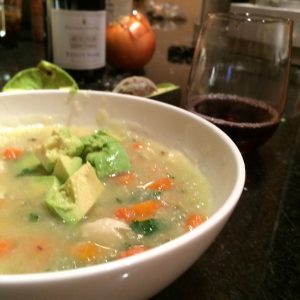
(delicious entree that keeps well and makes a big batch that I can season a variety of ways each day)
1 qt chicken broth
2 cups peeled and chopped zucchini (I used 2 small-medium sized zucchini)
2 cups cauliflower, broken into florets (I used one head total)
1 cup chopped onion
2 cloves garlic, pressed or minced
1 cup peeled and diced carrots
1-1.5 lb shredded, pre-baked chicken
1/4 cup fresh parsley
2-3 tsp celery seed
2-3 tsp dried rosemary
salt and pepper to taste
1. In a medium pot, combine broth, zucchini, cauliflower, onion and garlic.
2. Simmer for 20 minutes, or until the veggies are soft.
3. Add soup to the blender (I love my Blendtec!), and blend until completely smooth – don’t overfill your blender like I did my first time and have hot soup explode all over your kitchen! lol. I did this the WRONG way so I could help you do it the right way! Do it in 2 batches if needed.
4. Return your blended soup to the pot, along with shredded chicken and carrots. Simmer for 10 min or until the carrots are done to your liking.
5. Add seasonings, stir in and allow to sit briefly. Remove from heat.
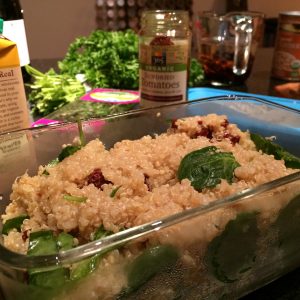
(perfect side dish with my soup or with fish)
1 cup sprouted quinoa
2 cups water
8-10 sundried tomatoes
1 cup baby spinach
1 1/2 tsp sea salt
1. Add quinoa and water to a pot and stir. Bring to a simmer and cook, stirring occasionally until the water has absorbed.
2. Cut sundried tomatoes in slivers. I use the ones packed in oil, and drizzle a couple tablespoons of the seasoned oil into my quinoa too.
3. Stir in sea salt, and then mix in spinach.
2. Make a grocery list based on the recipes, and don’t forget the other things you’ll need to pick up!
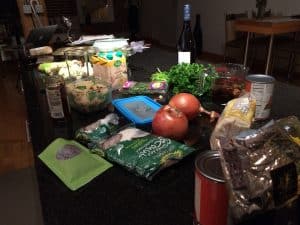
Additionally, you’ll want to think about the meals and foods you won’t prep in advance, and can have on the fly. For example, toppings for your oatmeal and add-ins to your smoothies. Maybe you want some canned tuna or beans on hand that you can mash together with avocado for a quick and delicious snack or meal.
I always make sure I have some frozen fish/meat and frozen vegetables in the freezer too, because I tend to eat out with friends on the weekend, and don’t stick to a schedule.
Having things on hand that won’t go bad is super important. Being mindful of my nutrient intake throughout the day is why I always have an organic, plant-based protein powder on hand – to make sure I’ve got a good quick shake I can pound on the go, usually with a piece of fruit and some almond milk.
Other things I’ll be eating that I’ll want to pick up or make sure I have on hand:
- Eggs (I always spend the extra for the pasture-raised organic, the nutrients are much more bioavailable)
- Frozen fish (wild caught whenever possible), or buy fresh and freeze – I say this because fish doesn’t keep as long so you need to cook it fresh or freeze it to cook fresh.
- Greens for smoothies and salad
- Fresh and frozen fruit (depending on the price, season, etc – for example, fresh pineapple was cheap, strawberries were not, so I got frozen strawberries and fresh pineapple).
- Frozen veggies – I like having some frozen veggies on hand for when my fresh supplies dwindle. Fresh is, of course, ideal, but not always possible.
- Pantry items (like sundried tomatoes, cinnamon, hemp seeds, chia seeds, etc)
- Protein powder
- Almond milk (I get original, unsweetened)
- Grass fed butter (the nutrients from the vegetation the cow eats are what makes grass fed butter superior to butter from grain fed cattle – read more)
- Ezekiel sprouted grain English Muffins (optional, these are a wonderful complex carb to include with zero additives or sugar, made from sprouted grains)
- Green juice (I’ll get a couple of these because they have pressed fresh at my store, and I don’t have a juicer. I’ll do a mix of green smoothies and green juice).
3. Set aside some time to enjoy your grocery shopping trip.
This is really important. Enjoy shopping – you’re an urban hunter-gatherer 🙂 I like to get my groceries on a day that I have time to putter around the grocery store… This is actually the story behind why I started teaching cooking classes at Whole Foods…
I would walk around the store doing my shopping, talking to the store employees about the food. Most of the people who work there really like the company they work for, and know a lot about the businesses they buy from and will take the time to talk to you about it…this is even more fun at a Farmer’s market!
I’m endlessly curious.
I made friends with a lovely woman named Barb, who worked in specialty foods. She would often ask me how I could eat “so much food” – lol, my grocery cart full of greens and whole foods looked odd to her and she wondered “where I put it.”

I hadn’t written the Body Fuel System yet, but I was just starting this blog. Barb got curious from our conversations and started reading it. It was a little less than a year later when the Healthy Eating Specialist at Whole Foods called me up and told me Barb had lost 50 pounds, and was being featured as their healthy team member of the month – and when they interviewed her and asked what had inspired and guided her journey, she said, “Betty Rocker!”
So I started teaching cooking classes – and testing out my recipes…and here we are today!
One of my friends shot a video of my very first class, please enjoy this little piece of Betty Rocker history. Back then I had no idea how much I was capable of, I just couldn’t stop following this dream. I had to share my love of food and to help people love their bodies.
4. Food prep – aka cook!
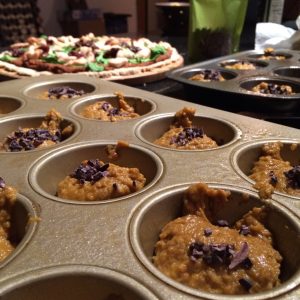
I call this method “batch prep” because you’re batching your time. While doing food prep this way can seem time consuming, I find it extremely efficient and it saves me a ton of time during the week (and money – because you’re not nickel and diming yourself on lunches out, snacks, take-out food, etc).
Not to mention it absolutely ensures I’m going to be making the best choices for my body all week and not relying on pre-made foods that have too much sugar, have additives or ingredients that might not be optimal for my health, can upset my hormone equilibrium and compromise my immune system.
That’s the real cost of eating foods you don’t make…so when good food seems expensive, I think about how much I’m saving on health care and how fit and healthy I’m going to be in my 60’s, 70’s and 80’s as a result of my choices now.
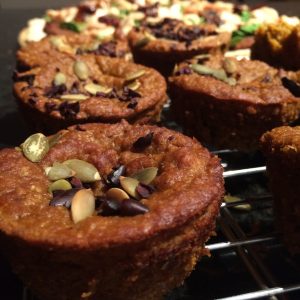
Other alternatives to batch prep include “hybrid prep” which I lay out in every week of the Body Fuel System (every week gives you 3 options: batch, hybrid and minimal). That’s when you have the plan, the grocery list and the recipes – but you don’t make them ALL in one main session – just a few of the staples. Then you strategically cook other things as you go through out the week. That’s a great fallback method and works really well for a lot of people too!
This week’s prep:
I like to start out by turning on some good music. I’ll wash all of my greens and vegetables (use 1/4 cup apple cider vinegar to a basin of water in your sink and a small vegetable brush). I’ll prep the recipes I listed above for you together.
So here’s what I did – a rough estimate, you may decide to prep less or more of the recipes on the same day:

2. Wash greens and veggies. Bag up any I’m going to use for smoothies, and toss a quick salad together.
3. Prep veggies for soup.
4. Get chicken in the oven.
5. Pack up oatmeal.
6. Get quinoa cooking on the stovetop.
7. Start cooking the soup on the stovetop.
8. Begin prepping your pizza crust, and pop it in the oven when the chicken comes out.
9. Soup goes in the blender and then back in the pot to finish cooking with additional ingredients.
10. Finish up quinoa and pack it up.
11. Make sundried tomato spread for pizza, top your finished crust and pop it back in the oven while you….
12. Make pumpkin protein muffins.
13. You’re done! Avoid ending with a disaster zone in your kitchen by cleaning as you go – one of my personal success strategies with batch prep sessions.

5. Sample Days of Eating – 3 days of what I ate this week
Many people get really stuck at this point and bogged down in some of the most common questions. How much am I supposed to eat? What about my pre-and post-workout? I can’t eat too close to bedtime, so can I eat after an evening workout? How many calories am I supposed to eat?

A calorie doesn’t tell you the nutrient density in a food – it only tells you how many units of energy are in it. If a popsicle had the same calories as a pumpkin protein muffin, would that be a good thing to substitute? You wouldn’t give your body nearly as many nutrients, and you’d have to filter and process all the sugar – and lose the fiber, potassium and other awesome nutrients.
Your body knows that it’s full because of volume (how much you ate) or nutrient density (the nutrients in the food you ate).
You know how you just can’t stop eating certain foods until your stomach literally starts to hurt? This is why. You aren’t getting the nutrients you need, so your body just doesn’t feel “full” or satisfied until your gut is literally stretching.
Many people shy away from whole foods that contain fat and carbs because they’re fearful of gaining weight – opting instead for some processed version of them.
But those processed and pre made foods create all kinds of long-term problems in our bodies – insulin resistance, sugar spikes, fat storage, toxicity and the myriad of precursors to major disease and health problems. Our lean ancestors didn’t have “reduced fat butter” or “low fat yogurt” or “carb free bread.”
There is definite merit in learning the macronutrient counts of different foods, (how many grams of protein, carbohydrates and fat) but it’s easy to miss the enjoyment of eating and cooking when you’re constantly tracking your calories.
I’ll be the first to agree that having this experience is an important part of the learning process. Understanding the composition of different foods is extremely helpful. But don’t let it become a crutch and catch yourself limiting your food intake, obsessing over what you eat and skimping on whole foods because they have “too many calories.”
You don’t need specific “pre and post workout meals.” The nutrients you need are in the meals you made for the week ideally, and if you focus on eating filling and satisfying nutrient dense meals at least 3 times daily, you will get what you need to support your activities. If you’re training hard, you may need to up your portions, especially of protein and carbs. You could benefit from adding that green smoothie with an extra serving of protein powder in at some point in the day.
You’ve got to adopt a lifestyle and habits that you can stick to for the long term.

Eat real foods. Eat a variety of them. Include protein with your meals. Eat complex carbs in the morning and around your workouts, and eat lots of vegetables, fruit, and greens. Don’t avoid fats. Stop eating when you are full. Eat when you are hungry. Let your food taste good! Respect your body, don’t starve it, don’t beat it up with chemicals and junk food.
Check out what I ate for the first 3 days of the week. You could swap the order of these around to suit – i.e. on Day 2 if you aren’t hungry pre-workout in the morning having a light shake is a great option, especially if you have an intense workout. Amounts vary, and I’ve listed the amounts I ate for you – but I don’t have rules for myself, I just eat til I’m full.
Day 1
- Meal 1: 3 whole Eggs with sauteed greens (toss a cup of your pre-made salad in the pan), Sprouted Grain English Muffin, Grass-fed butter, espresso (2 shots)
- Meal 2: Green Smoothie
- Meal 3: Pizza (1/4 of my pizza)
- Meal 4: Pumpkin Protein Muffins (2)
- PM Workout
- Meal 5: Soup with Quinoa (about 1 cup of soup, 1/2 cup of quinoa)
Day 2
- Meal 1: Oatmeal blended with banana, chia seeds, cinnamon and almond milk – optional, blend in a serving of vanilla protein powder (about 1/2 cup oatmeal, 1/2 banana 1 T chia seeds, 1/2 cup almond milk)
- AM Workout
- Meal 2: Protein Shake with raspberries
- Meal 3: Tuna + Avocado Salad with Quinoa and a serving of your Mixed Greens Salad (1/3 of an avocado, 1 can tuna, 1/2 cup quinoa)
- Meal 4: Pumpkin protein muffins (2)
- Meal 5: Soup with avocado (about a cup of soup, 1/4 avocado)
Day 3:
- Meal 1: 3 eggs with sauteed greens, quinoa (about 1/2 cup)
- Rest Day
- Meal 2: Green Juice, pumpkin protein muffins (2)
- Meal 3: pizza (1/4 of my pizza)
- Meal 4: Soup with avocado (about 1 1/4 cup soup with 1/3 avocado)
- chocolate chip cookie dough (about 1/4 cup)
I wasn’t as hungry on Day 3, probably because I didn’t do a workout. It’s important to be okay with listening to your body. If you’re not hungry, you shouldn’t force yourself to eat. When you’re hungry, eat the best foods you can!
Let me make healthy eating easy for you! Take my Eating Type Quiz!
*please note: reproduction of this, or any of the copyrighted work or images on this website without written permission from the author and owner of the site is a violation of copyright law and will be pursued to the full extent of the law. This content has been created by the site creator and is for educational use on thebettyrocker.com. Do not plagiarize or reproduce this, or any content from this site. Sharing links and referencing these articles with permission is the proper approach to take. Use the contact form if you have any questions.
